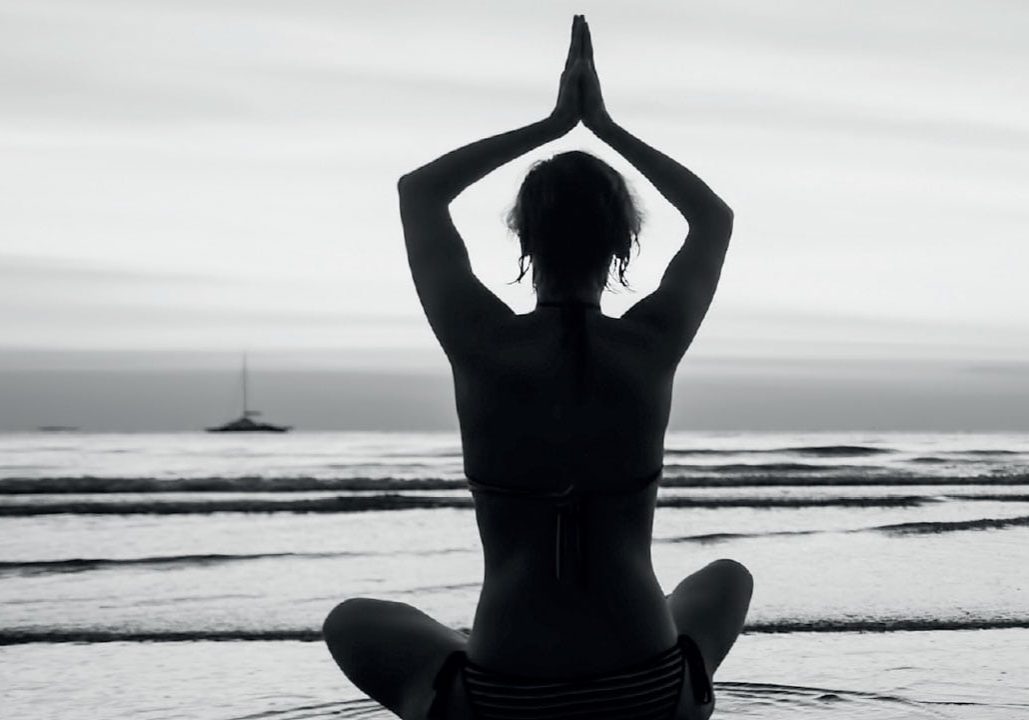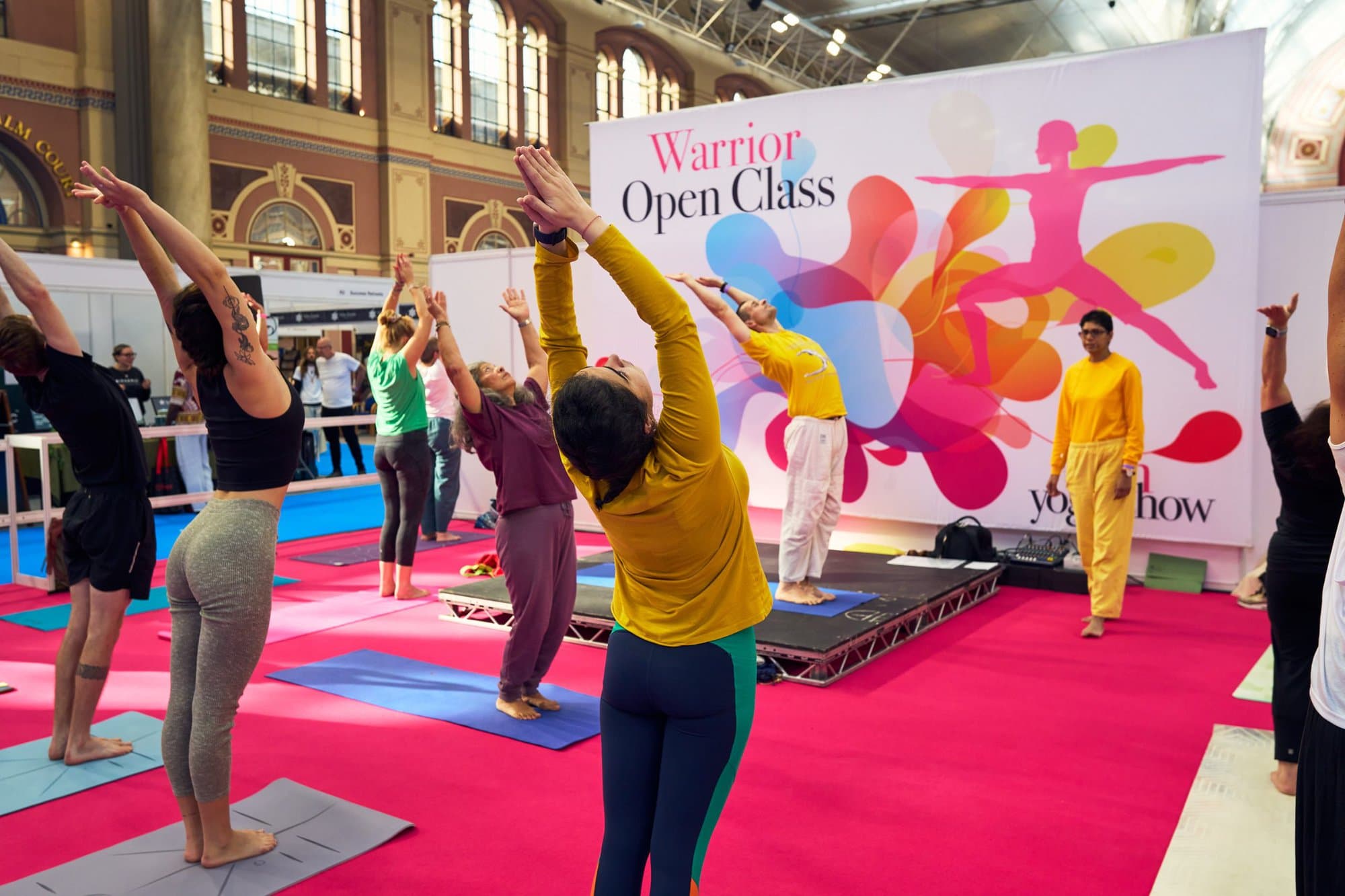
Growing with Yoga: 5 Lessons
Notes from a bittersweet year on turning 54 with yoga. By Rola Tassabehji
Reading time: 7 minutes
As my 54th birthday approaches, I find myself, as always before birthdays, reflecting on life, the year gone by, and things I could have done better. Yet this year’s ‘self-evaluation’ seems different — less judgement, more self-acceptance and, after a health scare, a deeper gratitude for good health.
Throughout a turbulent year marked by my mother’s passing away after a long illness, for comfort, I often resorted to my mat, at times near her hospital bed, or to reading (and re-reading) classic yoga and philosophy books. Yet, the year was also bittersweet, with moments of joy watching my sons go out in the world and rediscovering travel to faraway places. Through the ups and downs, yoga was my constant companion.
Having started a dedicated, unintentional yoga journey only in my 40s, I still consider myself a beginner, despite accumulating certifications as ‘advanced’ yoga teacher and yoga therapist. This year, in particular, the practice offered a sharp learning curve that I wished I could have shared with my younger self.
YOGA GETS BETTER WITH AGE
‘Listen to your body’ is a standard cue in a yoga class but becomes especially relevant for practitioners over 50. Respecting body changes means not being ashamed of making use of props such as belts, bolsters, and chairs. Practicing acceptance also does not mean resignation and giving up, but exploring different ways of adapting the postures, allowing us to feel better about our bodies, even when they are not perfect.
In addition, while there is nothing wrong with treating yoga as a fitness practice, going back to its ancient roots takes away any stigma from joining a ‘Yoga after 50’ class. In yoga, asanas (physical postures) are part of the whole story, but not the dominant component. Practicing pranayama (breathwork) or dharana (focus, the initial step for deep meditation) is as important as the physical practice, which evolved later in India and subsequently the West.
In ancient Vedic text, we also learn about the value of moving inwards as we grow older. Vedic philosophy is generally regarded as the spiritual foundation for the future development of both yoga and Hinduism. The four stages, or Ashramas, of Vedic life are: Brahmacharya (student life), Garhasthya (family life), Vanaprastha (retired life), and Sannyasa (life of renunciation).
The Vedas remind us the years of proving ourselves at work and building a family lead into more inward-focused life stages. Our personal yoga practice can reflect these life stages, with the mental, emotional, and spiritual benefits evolving to transform how we move and how we feel about ourselves.
YOGA CHANGES YOUR PERCEPTION OF BEAUTY
In 2007, I first came across a global research study that revealed that only 2% of women around the world considered themselves beautiful. At the time, I was leading corporate communications for Unilever in the Middle East and acted as the face for the award-winning Dove Campaign for Real Beauty in the region.
Since then, many brands have followed a similar path of challenging a narrow definition of what it is to be beautiful. Although some have genuinely helped change perceptions, social media culture and imagery continue to propagate a limited conversation around beauty.
While progressing through my yoga journey, I acquired a different lens to the concept of beauty. Witnessing the transformative power of yoga on myself and others, I began using the word in a different context — for example, describing a beautiful yoga practice I had just experienced myself or after witnessing the excitement, joy, strength, and presence of individual yoga students after class.
I love this quote from famous Ashtanga yoga practitioner Kino MacGregor, which summarises the process: “I never felt pretty, let alone beautiful, when I was a little girl. I felt like the odd one out, the ugly duckling. People told me I was too short, my legs too big, my face was too flat to be attractive. When I started practicing yoga, I began seeing beauty all around me. The trees, the flowers, the sunsets all seemed to glow with divine light. Then I started seeing beauty beyond physical form, expressed in compassion, kindness, forgiveness, and love.”
From freedom to acceptance, compassion, and self-awareness, yoga provides a path to a different understanding of beauty. Getting ‘beauty brands’ to showcase more diverse-looking models and use more inclusive language in their advertising is a step in the right direction toward a healthier and more socially-equitable society. But this year convinced me that more needs to be done at a personal level. Yoga offers a tool to let go of chasing external beauty standards, however broad, and discover one’s authenticity. And that’s beautiful.
YOGA IS A MULTIFACETED PHENOMENON
According to yoga scholar Georg Feuerstein, “Yoga is a spectacularly multifaceted phenomenon and as such it is very difficult to define.” This made more sense this year after visiting India and studying its complex trajectory to modern times. Rather than following one specific lineage or style, I learned that the evolution of yoga was driven by many political and social forces, a reminder of the different influences of modern-day yoga and of its original aim as spiritual transformation.
While many styles still claim to represent the authentic and traditional form of yoga handed down from thousands of years, most are perhaps best understood as part of a wider interconnected context, a powerful synthesis of Western and Indian modes of physical culture and Hindu wisdom. As Mark Singleton, author of the controversial book Yoga Body: The Origins of Modern Posture Practice states, this by no means demeans the practice, but challenges the conventional wisdom that yoga has its direct origin in Indian yoga practice and tradition.
Meera Nanda in her enlightening Science in Saffron: Skeptical Essays on History of Science adds, “Ideas were not always radiating from India to the rest of the world, but also coming into India from the rest of the world. Like every other sister civilisation, we were givers and we were takers, with no monopoly on giving.”
By abandoning the notion of one ‘true’ or ‘authentic’ yoga and not following any particular lineage, guru or style, this year, I gave myself permission to experiment with different yoga styles and tools. It was a great reminder of how multi-dimensional the story of yoga is — one that combines the old and the new, the physical and spiritual, East and West, the journey and destination, and the factual and less tangible.
A YOGA RETREAT DOES NOT REQUIRE AN EXPENSIVE, EXOTIC DESTINATION
Across the world, yoga and wellness retreats are seeing a resurgence, especially in places like Portugal, which I call home. The trend is proof of the mental, emotional and physical toll that the pandemic and lockdowns caused. Even among the lucky few who have had it easier than others, there is a growing awareness of the need to actively cultivate health and immunity before a crisis or health setback happens — following the Chinese proverb: “dig the well before you’re thirsty.”
However, as travel ramps up, it is easy to get lost in the moment and choose a retreat that is forgotten a few days after you come back home. A good starting point is to go back to the root meaning of the word. A dictionary definition of retreat is the act of moving back or withdrawing. This definition implies that the destination per se is not as important as long it is a private and safe place.
While every yoga destination has something unique to offer to yoga enthusiasts and wellness travellers in general, yogis have long known the therapeutic effects of nature, with shifting seasons a reminder that constant change is both natural and unpredictable.
In addition to staying close to nature in a safe environment, by far the best retreats I attended this year, even the silent ones, fostered community and social connections with people from diverse backgrounds. The ancient Indian concept of Vasudhaiva Kutumbakam, engraved in the entrance hall of the Parliament of India, refers to the view that ‘the world is one family’. For many, disconnection from society has contributed to a disconnection from ourselves. It calls for a retreat that offers safety and trust, where people are open, can create profound experiences to reconnect with others and oneself.
It is a delicate balance to foster deep introspection and positive relationships during a short retreat. However, a yoga[1]focused retreat makes it more accessible as most people share similar values. And if they feel safe, they are likely to be authentic and ready to listen or respect your need for quiet time; understanding that a retreat is not so much an escape, but a coming home to oneself.
THE REAL INFLUENCERS: YOGA INSTRUCTORS IN CONFLICT ZONES AND MARGINALISED COMMUNITIES
This year, I had the opportunity to meet a new generation of yoga instructors using the practice as a tool for self[1]empowerment, social activism and to create social change. I drew on my Middle East background to interview some of the lesser-known yoga instructors helping to heal a divided people in the conflict zones in the Arab world as well as refugee camps in Europe. But it is a global trend that offers hope and optimism for a better future, a path towards a kinder and more compassionate world.
Brave yoga instructors from places across the world — including inner city New York, Iran and Kenya to name a few — are experimenting with the therapeutic aspects of trauma-sensitive yoga to help heal individuals and communities affected by violence and conflict These people often operate in non-profit organisations serving the forgotten and marginalised communities, their voices largely absent from the influencer-led yoga social media feed.
Having witnessed multi-generational war firsthand, I recognise the complexity of issues in wars and conflict, and that yoga alone can never bring reconciliation. With so much tension on various fronts, several tools and interventions are required. But perhaps yoga can provide an opportunity, an opening, for individuals to pause, breathe and address inner conflict, while helping build compassion for the other side — eventually leading to better communication and understanding.
The passionate young teachers I met from refugee camps in Europe and in war[1]torn Lebanon and Palestine are living proof of yoga’s core principles, such as Ahimsa (non-violence) and Seva (self-less service). They are an inspiration and give new meaning to yoga’s role in individual and social healing.
In sum, all these insights shaped my yoga year. But one quote by a Syrian man asked to define what a refugee is, struck me most: “A refugee is a person who seeks safety in an unsafe world.” In a sense, perhaps we are all refugees, with yoga offering one multi-dimensional approach to safety, self-care and self-inquiry — one which gets better with age.





